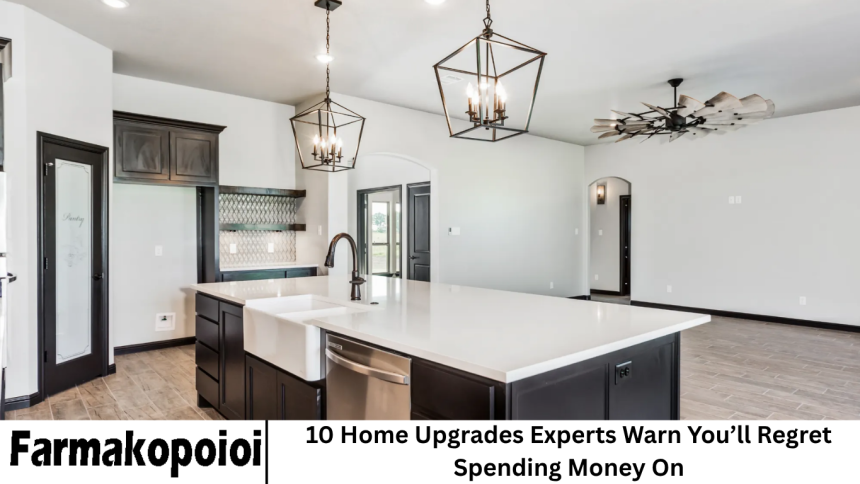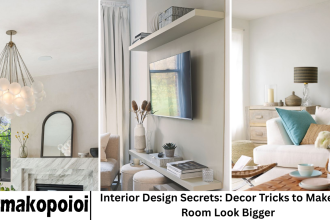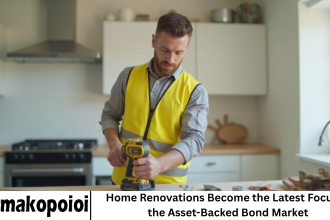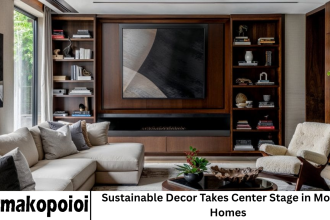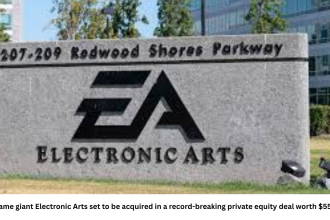Home improvement projects can feel exciting — a fresh coat of paint, new lighting fixtures, a spa-like bathroom, or maybe even a backyard pool. It’s easy to imagine how a few changes could transform your space into a dream home or increase your property value. But here’s the catch: not every upgrade pays off.
- Over-the-Top Luxury Kitchens
- Backyard Swimming Pools
- High-End Bathroom Remodels
- Wall-to-Wall Carpeting
- Home Office Overhauls
- Sunrooms and Enclosed Patios
- Built-In Electronics and Entertainment Systems
- Over-Personalized Decor and Finishes
- Converting Bedrooms into Specialty Rooms
- Expensive Landscaping and Water Features
- The Psychology Behind Over-Investing in Upgrades
- Frequently Asked Question
- Conclusion
Some renovations look great in the short term but cost a fortune without offering real returns. Others may even make it harder to sell your house down the road. According to real estate agents, interior designers, and home improvement experts, certain upgrades are better left on your Pinterest board than in your budget.
Whether you’re planning to stay in your house for years or sell it soon, knowing where not to spend can save you thousands of dollars and a lot of stress. Below are 10 home upgrades experts warn could be a waste of money, along with why they often backfire — and smarter alternatives to consider.
More Read: Interior Design Secrets: Decor Tricks to Make Any Room Look Bigger
Over-the-Top Luxury Kitchens
Why It’s Tempting:
The kitchen is often called “the heart of the home.” It’s where families gather, meals are made, and guests are entertained. That’s why homeowners often think a high-end kitchen remodel will boost their property value.
Why Experts Say No:
Real estate data consistently shows that a full luxury kitchen remodel rarely recoups its cost. While midrange remodels can have decent returns, top-of-the-line renovations often don’t match what buyers are willing to pay. A $100,000 kitchen may only increase resale value by $50,000 to $60,000.
Expensive features like imported marble, custom cabinetry, designer appliances, and built-in espresso machines may also not match every buyer’s taste. What you see as a dream kitchen might look overdone or impractical to someone else.
A Smarter Move:
Opt for a midrange remodel — think durable countertops, energy-efficient appliances, and a functional layout. These updates offer better ROI and make your kitchen appealing to a broader audience.
Backyard Swimming Pools
Why It’s Tempting:
Few things scream luxury like a sparkling pool in your backyard. It’s a visual showpiece, a fun entertainment feature, and a personal oasis in the summer.
Why Experts Say No:
Unless you live in a warm climate where pools are common, installing one can cost more than it adds to your home’s value. Pools require high maintenance, costly insurance, and can even limit your buyer pool. Many potential buyers see pools as a liability rather than a perk.
You also have to consider ongoing expenses: cleaning, heating, chemical treatments, and repairs. Over a decade, a pool can easily cost tens of thousands beyond installation.
A Smarter Move:
If you love the idea of a backyard retreat, consider a well-designed patio or deck. Outdoor living spaces often offer a much higher return on investment and require less upkeep.
High-End Bathroom Remodels
Why It’s Tempting:
Spas and wellness are trending, so why not turn your bathroom into a personal sanctuary with a soaking tub, smart mirrors, and radiant floor heating?
Why Experts Say No:
While updating a bathroom can improve comfort and value, going too high-end rarely pays off. Features like steam showers or heated floors add thousands to your budget but may not appeal to the average buyer. Plus, these upgrades often require specialized maintenance and repairs.
A Smarter Move:
Focus on functional and timeless updates: new tiles, modern fixtures, good lighting, and proper ventilation. A clean, updated bathroom can make a great impression without draining your wallet.
Wall-to-Wall Carpeting
Why It’s Tempting:
Carpeting can create a warm, cozy atmosphere, especially in bedrooms or living rooms. It’s also cheaper than many flooring alternatives upfront.
Why Experts Say No:
Carpet is a high-maintenance flooring choice. It traps dirt, allergens, and odors, which can make it less appealing to buyers. It also tends to age quickly, requiring replacement far sooner than hardwood, vinyl, or tile.
In today’s market, most buyers prefer low-maintenance, easy-to-clean flooring, and wall-to-wall carpet can actually decrease your home’s perceived value.
A Smarter Move:
Invest in durable flooring like hardwood, laminate, or luxury vinyl planks. Add area rugs for warmth without committing to full carpeting.
Home Office Overhauls
Why It’s Tempting:
With remote work on the rise, many homeowners see value in creating a professional, tech-equipped home office. Built-in desks, custom shelves, and high-tech wiring might seem like smart investments.
Why Experts Say No:
While an office is a nice perk, not every buyer prioritizes or needs one. Converting a bedroom or multipurpose space into a hyper-specialized office can limit how future buyers see the room. Also, tech-specific features age quickly, making the space outdated within a few years.
A Smarter Move:
Create a flexible, functional workspace without over-customizing. A simple desk nook or removable office furniture can appeal to both remote workers and those who want to use the space differently.
Sunrooms and Enclosed Patios
Why It’s Tempting:
A sunroom sounds dreamy — a cozy space for reading, entertaining, or enjoying the view.
Why Experts Say No:
Sunrooms add little functional square footage to your home but come with a big price tag. They’re often expensive to heat and cool, don’t count as fully livable space in many property appraisals, and aren’t essential for most buyers.
A Smarter Move:
If you love natural light, consider larger windows or French doors that bring in sunlight without a full addition. A well-designed patio with shade can also offer similar enjoyment at a fraction of the cost.
Built-In Electronics and Entertainment Systems
Why It’s Tempting:
A sleek, built-in entertainment wall with surround sound can make your living room feel like a luxury cinema.
Why Experts Say No:
Technology becomes outdated fast. What’s cutting-edge today can be obsolete in five years. Future buyers may not want — or know how to use — the system you spent thousands installing. These upgrades are also hard to remove or update without extra cost.
A Smarter Move:
Invest in portable or modular tech solutions. A quality TV, soundbar, and smart lighting can give you the same experience without locking you into outdated systems.
Over-Personalized Decor and Finishes
Why It’s Tempting:
Your home should reflect your personality — bright paint colors, unique fixtures, or patterned tiles can make a house feel truly yours.
Why Experts Say No:
The more personalized and niche your design choices, the harder it may be to sell your home later. Bold patterns or unusual finishes may require new owners to renovate before moving in, lowering your home’s appeal.
A Smarter Move:
Use neutral, timeless finishes for the permanent parts of your home. Express personality through easily changeable elements like rugs, curtains, or wall art.
Converting Bedrooms into Specialty Rooms
Why It’s Tempting:
Turning a spare bedroom into a gym, walk-in closet, or theater room can make your home feel custom and luxurious.
Why Experts Say No:
The number of bedrooms is a key factor in home value. Converting a bedroom can actually decrease your home’s market price, even if the specialty room looks amazing. Most buyers prefer the flexibility of extra bedrooms over single-purpose spaces.
A Smarter Move:
Keep bedrooms as bedrooms or make temporary, reversible changes. A freestanding closet system or foldable gym equipment can give you functionality without sacrificing value.
Expensive Landscaping and Water Features
Why It’s Tempting:
A beautiful yard with fountains, ponds, intricate walkways, and exotic plants can create instant curb appeal.
Why Experts Say No:
High-end landscaping looks great but comes with high maintenance costs. Ponds, waterfalls, or intricate garden designs require regular upkeep that not all buyers want to inherit. Additionally, these features rarely add dollar-for-dollar value to your property.
A Smarter Move:
Opt for low-maintenance landscaping with native plants, simple hardscaping, and a clean, inviting look. This boosts curb appeal without saddling you with expensive upkeep.
The Psychology Behind Over-Investing in Upgrades
Many homeowners believe that every renovation automatically increases value, but that’s a myth. Real estate value is determined by market demand, neighborhood norms, and buyer preferences — not just how much you spend.
When you over-personalize or overbuild, you risk outpricing your neighborhood. Even if you love your upgrades, you may not recoup the costs when it’s time to sell.
A better strategy is smart upgrading:
- Prioritize essential repairs (roof, HVAC, plumbing).
- Choose timeless, durable materials.
- Think about resale, even if you’re not planning to move soon.
- Avoid ultra-specific features that won’t appeal to most buyers.
- Smart Alternatives That Add Real Value
If you want to invest in your home wisely, experts recommend focusing on upgrades that offer strong ROI and broad appeal:
- Energy-efficient upgrades: New windows, insulation, or solar panels can lower bills and attract eco-conscious buyers.
- Kitchen and bathroom refreshes: Midrange updates have better payoffs than luxury remodels.
- Fresh paint: A neutral color palette can transform your home’s look affordably.
- Updated lighting: Good lighting increases functionality and enhances mood.
- Curb appeal improvements: A clean exterior, modern front door, or new house numbers can make a strong first impression.
These changes often cost less but have a significant impact on your home’s appeal and value.
Frequently Asked Question
Do all home upgrades increase property value?
No. Some upgrades can actually decrease your home’s value if they’re too personalized, overly expensive, or don’t align with neighborhood norms.
Which upgrades offer the best return on investment?
Midrange kitchen and bathroom remodels, energy-efficient windows, fresh paint, and curb appeal improvements typically offer strong ROI.
Is adding a pool a good investment?
Only in warm climates where pools are standard. Otherwise, pools can be costly liabilities that don’t add equal value to your home.
What should I upgrade before selling my house?
Focus on repairs and cosmetic improvements: fixing leaks, painting, updating lighting, and refreshing flooring can make a strong impact on buyers.
How can I personalize my home without hurting resale value?
Use decor elements — like rugs, curtains, or accent walls — instead of permanent fixtures. Keep permanent finishes neutral and timeless.
Why is overbuilding a problem?
When your home’s upgrades exceed neighborhood standards, you may not recoup costs. Buyers compare your home to others nearby, not to your investment amount.
Are there low-cost upgrades that can boost value?
Yes. Painting, upgrading fixtures, landscaping, and energy-efficient changes often add value at a lower cost compared to luxury remodels.
Conclusion
Renovating your home can be deeply rewarding — but only when done strategically. The upgrades that make your house more enjoyable to live in aren’t always the ones that make financial sense. Before taking on any renovation, think of your home as a financial ecosystem.
Every change affects not just its appearance, but also its future worth, maintenance costs, and livability. A $50,000 bathroom remodel might make sense in a luxury neighborhood, but could be a total waste in a modest suburban home.


